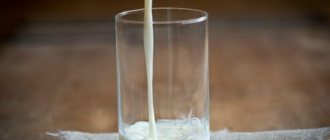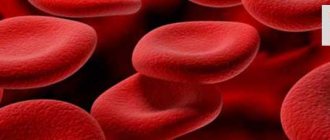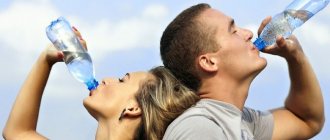If you are interested in healthy eating, you have probably tried to calculate your diet. The calculation begins with determining the basic protein requirement, since calorie formulas are well known, and the amount of fats and carbohydrates is ultimately tied to the total calorie content and the amount of protein in the diet.
In this article, we have collected scientific data on protein consumption to see the most accurate picture and answer the question: how much protein and in what form should a person consume, taking into account his activity? If you're in a hurry and don't care about the background, skip to Summary Table #4 at the very end of the article, where you'll find all the numbers.
- Table No. Ratio of NAC to the total amount of protein in food
- 2004 Required amount of protein in strength sports
What is protein?
Proteins or proteins (from the Greek protos - first, important) are natural polymers in which amino acids are linked by a peptide bond (CO-NH). The term “proteins” was first introduced in 1838 by Jönsem Jacob Berzelius (Swedish chemist and mineralogist (1779-1848) and quite accurately reflects the dominant biological significance of compounds of this class.
Protein is not only a necessary building material for replacing old cells in the body and forming new ones, it is also part of many enzymes and neurotransmitters. The biological functions of proteins are divided into structural (keratin of hair, nails, collagen of connective tissue), catalytic (enzymes), transport (hemoglobin, myoglobin), protective (antibodies, blood fibrinogen), contractile (actin, myosin of muscle tissue), hormonal (insulin, growth hormone, gastrin).
Once in the body, proteins are broken down by enzymes into amino acids, some of which break down into organic keto acids; some α- and β-keto acids occupy a central place in metabolic processes. The amino acids necessary for the body are synthesized from keto acids, and proteins and substances of protein nature are synthesized from amino acids.
Amino acids are polyfunctional compounds containing at least two different chemical groups (COOH and NH2) that can react with each other to form a covalent peptide bond (CO-NH). Amino acids are amphoteric compounds, that is, “dual” and “reciprocal,” which means they have the properties of acids and alkalis.
Historical information
A quote from Colin Campbell’s book “The China Study” well characterizes the norm of protein intake in the historical past:
Since this nitrogen-containing chemical was discovered by Dutch chemist Gerhard Mulder in 1839, protein has become the most revered of all nutrients. The word "protein" comes from the Greek proteios, meaning "of paramount importance." […] Scientists of the past, such as the eminent German explorer Karl Voith (1831–1908), were ardent supporters of the protein. Voith found that a person needed only 48.5 grams of protein per day, but recommended a huge dose of 118 grams per day, which was due to the cultural attitudes of the time. Protein and meat were considered synonymous, and everyone strived to include meat in their diet, just as today we strive to have larger homes and faster cars.
Voyt was of the opinion that there can never be too much of a good thing. Voith's students included several prominent nutrition researchers in the early 1900s, including Max Rubner (1854–1932) and Wilbur Atwater (1844–1907). They both strictly followed their teacher's recommendations. Rubner argued that eating protein (meaning meat) is a symbol of civilization as such: “... eating protein in large quantities is the right of a civilized person.” Atwater followed suit, establishing the first nutrition research laboratory at the United States Department of Agriculture (USDA). While heading this ministry, he recommended consuming 125 g of protein per day (currently only 55 g per day is recommended) [9]. Source:
Ideal protein according to WHO
The absorption of proteins occurs during the digestion process, when, under the action of proteolytic enzymes, proteins are broken down into amino acids in several stages. Amino acids enter the blood, after which they are used by the ribosomes of the body's cells to synthesize their own protein.
Twenty types of amino acids are known. Among them there are both completely replaceable and partially and completely essential amino acids, which must be obtained from food and cannot be replaced by others or synthesized in the body from other amino acids. Nine out of twenty amino acids cannot be synthesized and must necessarily enter the body with food. If any of the NAA (essential amino acids) is not enough for the body to synthesize its own protein, then the synthesis process stops.
When comparing the amount of protein in different products, the main idea is to compare the quality of the amino acid profile of each individual product by the amount of NAC in its composition. In 2007, the World Health Organization updated its regulation “Protein and amino acids: essential amounts in the human diet” [15]. You can see the requirements for the “ideal protein” set by WHO in 2007 in Table No. 1.
Table No. 1. WHO essential amino acids (consumption standards)
To get just 14.72 grams of essential amino acids from food, you need to eat about three times as much protein, which is equivalent to about 45 grams. After all, there are less essential amino acids in protein than non-essential ones, approximately two times more for products such as eggs, cheese, beans, chickpeas (see Table No. 2), three times more for products such as nuts, buckwheat, rye , as well as four times more protein in plant foods (cabbage, tomatoes, broccoli, spinach and others).
Protein deficiency for a growing body
A distinctive feature of protein metabolism is that there is no depot of protein compounds in the body. All protein in the body is included in the structure of the cellular elements of tissues and body fluids. Therefore, in the absence of a regular influx of protein substances, partial destruction of various cellular structures is observed, i.e., signs of “protein starvation” appear.
Proteins are an integral part of enzymes, hormones and neurotransmitters. Insufficient intake of proteins from food disrupts the dynamic balance of metabolic protein processes, shifting them towards the predominance of the breakdown of the body's own proteins, which ultimately leads to depletion of the body. Protein deficiency poses a particular danger to a growing organism, in particular, a decrease in protein in the diet to 3% of the recommended standards causes a complete stop in growth, loss of body weight, and changes in the chemical composition of bones.
A reduction of up to 3% can be expressed in physical terms, for example, for a man weighing 75 kg and a caloric intake of 2500 kcal, a value of 3% is equivalent to 75 kcal or 18 grams of protein, respectively, in absolute value for a person weighing 80 kg. For example, 18 grams of protein (not necessarily with a complete amino acid profile) are contained in: 770 g of oatmeal, 460 g of buckwheat porridge, 230 g of pita bread, 77 g of sunflower seeds or 77 g of cheese.
Risk zone in protein consumption according to the Russian Academy of Medical Sciences
According to the recommendations of the State Research Institute of Nutrition of the Russian Academy of Medical Sciences, protein intake standards are 0.75–1.0 and higher, but not more than 1.6 g/kg body weight per day [1]. The exact wording is that within these limits there is “no risk” to health. If you carefully look at the diagram with data on the population spread, you can assume that in the recommendations the research institute team is playing it safe and slightly overestimating the recommended values.
This is understandable, because an error in recommendations can directly harm a huge number of people. The population scatter plot says there is an 84% chance that an adult male or female over 18 years of age will need 0.675 grams of protein per day, which equates to an absolute value of 54 grams of protein per day for an 80kg person, or 40 grams of protein per day for a person weighing 60 kg. If we take into account the average percentage of NAC in protein, this figure completely coincides with the latest WHO recommendations.
Essential amino acids in protein
So, knowing how much protein you need to consume per day, it would seem that you can start selecting a menu, but here’s the thing - protein is different from protein. It is necessary to consider what amino acids the protein food you eat consists of. All protein products contain amino acids, from which the body creates its own proteins necessary for life. In total, 20 amino acids are involved in the formation of proteins, 12 of which can be produced by humans independently. The rest do not know how to do this, so they must do so with food, otherwise disruptions in the body will begin, in particular, stunting and weight loss. For example, leucine prevents the destruction of muscle tissue during active physical activity and promotes fat burning; together with other amino acids, it participates in muscle recovery and increases the production of growth hormones.
Isoleucine is also essential for physically active people, as it increases endurance and provides the body with energy. There are at least 6 more essential amino acids that a person must obtain from food. Protein products with such essential compounds are considered the most valuable. Nonessential acids are also very important, but with enough essential acids they can be synthesized from them. That is why it is important to consider not only how much protein a person needs per day, but also from which products the nutrient is best obtained.
Below is a table describing all the essential amino acids and the main protein foods in which they are found.
| Leucine | Chicken, pork, rabbit, goose, squid, mussels, pink salmon, carp, cheese, cottage cheese, eggs, legumes, millet |
| Lysine | Milk, cottage cheese, hard cheese, feta cheese, yogurt, red meat, chicken, turkey, cod, sardine, eggs, soybeans, beans, peas |
| Tryptophan | soy, cheese, milk, yogurt, cottage cheese, oatmeal, peanuts, sesame seeds, walnuts, meat, fish |
| Phenylalanine | soy, cheese, seeds, nuts, beef, poultry, pork |
| Valin | caviar, cheese, soy, lentils |
| Isoleucine | nuts (almonds, cashews), chicken, eggs, sea fish, pork, beef, rye, milk, hard cheese, buckwheat |
| Threonine | beef, lamb, eggs, chicken, turkey, hard cheese, feta cheese, fatty sea fish, barley, rye, buckwheat |
| Methionine | eggs, pork, beef, chicken, sea fish, milk, beans, sesame, soybeans, lentils, walnuts, peanuts, almonds, corn |
Minimum amount of protein in the diet
An approximate calculation can show how much protein our body needs to renew existing tissues. The cells of all muscle tissue are completely renewed in 16 years at an average weight. For a weight of 80 kilograms in an athletic person, we have a muscle mass of approximately 45 kg, and 20% of this mass is 9000 g of protein, the regeneration of which requires that our body synthesize a minimum of 1.5 g of protein per day. In addition to replacing aging muscle cells, such as when exercising, additional protein will be needed to restore the integrity of damaged muscle fibers.
Table from the book of Zbarsky B.I. "Biological chemistry "
Table No. 2. Ratio of NAC to total protein in food
The table shows the ratio of NAC to other amino acids in foods.
For normal muscle growth for a training athlete, protein intake should naturally be higher than the minimum values mentioned. At the same time, there are limits to metabolic processes and there are a number of studies suggesting that consumption of more than 1.6 grams per kilogram of body weight per day (in absolute terms, this is 128 grams for an 80 kg person) does not produce muscle gain in training athletes.
Table No. 3. Ratio of NAC to product cost
According to WHO, the minimum value of NAC, in absolute value equal to 14.7 grams for a person weighing 80 kg or 100% of the daily value of a complete amino acid profile for a person weighing 80 kg, can be obtained from the following foods:
The values in this table may be misleading because they are based on the consumption of one food item. If you combine different foods , you will get a more complete diet.
For example , 200 grams of buckwheat grains (dry weight) and 200 grams of tofu will have 100% amino acid profile. Since (Methionine + Cysteine) in 200 grams of tofu there is only 26% of the daily value for a person weighing 80 kg , and in 200 grams of buckwheat there are 66% of the daily value (Methionine and Cysteine).
Symptoms of excess protein
The body will certainly feel that it has been “overfed” with protein foods. Typically this is expressed as follows:
- constant thirst;
- pain in the kidneys and liver;
- joint pain;
- functional digestive disorders;
- weight gain;
- nervous disorders, fatigue;
- hormonal imbalances.
It is also worth noting that excess protein can lead to poisoning of the body with ammonia produced during the breakdown of the nutrient. And this is fraught with inflammatory and oncological diseases. Therefore, even when consuming such an important component, it is imperative to adhere to measures.
Research on Protein Eating
We would like to mention a number of studies that, in our opinion, deserve attention. These studies are quantitative and, unlike most others, have data on average protein intake required. The data was obtained in different situations, under different conditions, and complement each other, forming a more complete picture.
2004 – Required amount of protein in strength sports
A 2004 study by Professor Phillips found no link between exercise and the need to increase protein intake. With the caveat that if activity increases, then the total amount of energy expended increases, and accordingly, if the relative value in protein consumption does not increase, then the absolute value will, of course, be greater.
Summary: Athletes involved in strength sports should consume protein at levels consistent with general population recommendations, or 12 to 15% of energy from protein [4]. This means that the increase in quantity should be based on calorie expenditure during training. For example, if the basic diet is represented as 2500 calories and you spend 1000 calories in training, then in the end you should start from 3500 calories. If we take 12-15 percent from 3500, then this will be 420-525 calories or 105-130 grams of protein in absolute equivalent per training day.
In particular, the same article (1) states that the consumption rate will be 1.2 grams per 1 kg of the athlete’s weight, and it is obtained from the balance in relation to the total calorie content.
Table No. 3. Recommended values excluding physical load 12-15%
To calculate the calorie content of the main volume in this table, the Mifflin-San Jeor formula is used, where the age for all is taken equal to 30 years, the height for all girls is taken to be conditionally equal to 156 cm, and for all men - 166 cm, the “average activity” is taken into account as an additional exchange » at 1040 calories. The average value for women will be 1.16, and for men - 1.28 g / kg of body weight. Additional physical activity, such as three intense workouts per week (500 calories each) should be counted separately and increase total intake for women to 1.27 (9%) and for men to 1.37 g/kg body weight (7). %).
2007 – The effect of protein supplements on muscle and hormonal activity
The study is titled "Effects of Protein Supplementation on Muscle Activity and Resting Hormonal Changes in College Football Players." It looks at the effects of protein supplementation on athletic performance and hormonal changes. The study involved 21 experienced student-athletes. The resistance training program lasted twelve weeks. Some students were randomly assigned to the protein supplement group and some to the placebo group (11/10 ratio). During each session, subjects were assessed for strength (one rep max bench press and squat), power (Wingate anaerobic power test), and body muscle tissue structure. The blood of both groups was also analyzed before (0), during (6 weeks) and after (12 weeks) the studies for total testosterone, cortisol, growth hormone and IGF-1 . There were no differences in energy intake between the two test groups (3034 ± 209 kcal and 3130 ± 266 kcal, respectively), but a significant difference in daily protein intake was observed between the target (2 g/kg body weight) and placebo groups (1.24 g/kg).
Conclusions: Athletes training for strength may not meet daily recommended energy or protein requirements. When athletes are provided with a protein supplement, they appear to be supplementing their diet, and when there is a deficiency in their daily intake, protein supplementation appears to improve performance. If there was no previous deficiency in protein intake, then taking proteins will not affect progress in results.
2013 – One-time intake of protein, the connection between the amount of protein and metabolism
Protein intake and metabolism are addressed in a study entitled “Timing and distribution of protein intake during long-term recovery from resistance exercise alters myofibrillar protein synthesis” [13]. In this study, a group of professional athletes was divided into subgroups of 8, 7, and 8 people. They were given the same amount of protein, but divided into 10, 20, and 40 grams of protein respectively, resulting in the 20-gram protein group having better protein synthesis than the other two groups.
This study shows that the distribution of protein per meal is an important variable in promoting protein synthesis. The only disadvantage of this study is the small number of groups on which the experiment was carried out. This may have affected the quality of the study. What is certain is the need for morning and post-workout protein intake to prevent catabolism.
2014 – Review of a number of studies on protein and weight loss
This review of studies was published in 2014 [14]. The review contains a number of theses:
- Thermodynamics dictates that to lose weight, a person must consume less energy than he expends. Athletes, due to their often high daily energy expenditure, can be more flexible in this regard than untrained people. The big question is what macronutrient balance will promote greater fat loss, relative muscle retention, and still maintain athletic performance?
- Protein is a nutrient. The need for it to maintain muscle mass increases with a negative energy balance; protein, as a macronutrient, quickly saturates the body, leading to greater fat loss with a negative energy balance.
- Protein requirements for the general population are determined by various institutions but are typically in the range of 0.8–0.9 g protein/kg/day. In Canada and the United States, the Recommended Dietary Intake (RDA) defines the RDA as “...the average daily intake sufficient to meet the nutrient requirements of nearly all [98%] healthy individuals...”. The group also states that "...no additional dietary protein is suggested for healthy adults performing endurance exercise." It may be true that the basic protein "requirement" for even the most intensely training athlete is met by RDA protein. Thus, 0.8 g protein/kg/day can meet the needs of all processes requiring amino acids.
- An analysis of statements made by the Institute of Medicine in determining the protein RDA in North America and a report from the World Health Organization (WHO) on protein intake indicate that there is no evidence linking a high-protein diet to kidney failure.
- Conclusions: Protein is an extremely important macronutrient for athletes and is required for daily consumption. The level of protein intake for maintaining athletic performance and for development (adaptation) may vary for an individual athlete. Current evidence supports a per meal recommendation of 0.25g protein/kg/meal, with more to be consumed before bed. Based on available evidence, protein is a macronutrient of primary importance for weight loss due to its ability to maintain muscle mass and promote fat loss when consumed in large quantities. In addition, protein has some important properties—nutrition, thermogenic effects, and potential “boosting” effects—that mean it should be a staple in a weight loss diet. Although there is no specific recommendation for exactly how much protein one should consume, estimates have ranged from 1–3 to 1.8 g protein/kg/day to much higher values.
2017 – Meta-study
A 2021 meta-analytic study summarizing 49 studies with more than 1,800 subjects found a direct correlation between protein intake after strength training and strength gains [2].
One meta-analysis collected 49 studies involving 1,863 people. They trained for 6 to 52 weeks, with some using protein supplements (5 to 44 grams per session) and others not. This is one of the largest samples to date.
Strength training increased strength in all participants, i.e. one-repetition maximum (1RM) on different exercises. Protein supplementation added approximately 1 kg to the 1RM of inexperienced athletes. Experienced athletes gained approximately 4 kg. Lean body mass increased by about 1 kg from strength training. Protein added about 150 g to this, and for experienced athletes - another plus 1 kg of muscle. In addition, the results showed that the optimal protein dose was 1.6 g per 1 kg of body weight. Higher doses did not improve results.
2017 – Report of the International Association of Sports Nutrition
The International Association of Sports Nutrition in its report [11] lists thirteen points that it advises you to pay attention to:
- Physical activity (especially weight-bearing exercise) and protein intake before or after it stimulate protein synthesis.
- To build and maintain muscle mass through a positive muscle protein balance, a daily protein intake of 1.4–2.0 g protein/kg body weight/day is sufficient for most exercises.
- There is evidence to suggest that higher protein intake (>3.0 g/kg/day) may have a positive effect on fat loss during weight loss.
- Recommendations regarding the optimal amount of protein per serving for athletes are mixed and vary by age and type of exercise. General recommendations: 0.25 g high-quality protein per kg body weight or an absolute dose of 20–40 g.
- Protein doses should contain 700–3000 mg of leucine or a higher relative leucine content in addition to a balanced range of essential amino acids.
- Protein servings should ideally be evenly distributed throughout the day.
- The optimal length of time to take protein will likely vary depending on the individual.
- Physically active people can meet their daily protein needs by eating whole foods. Protein supplementation is a way to ensure adequate quality and quantity of protein post-workout while minimizing calorie intake, especially for athletes who typically perform high volumes of work.
- Fast-digesting proteins (simple compounds such as isolate) that contain high levels of essential amino acids (EAAs) and adequate amounts of leucine are most effective in stimulating muscle growth.
- Different types and quality of protein can affect bioavailability (quality of absorption).
- Athletes should consider focusing on whole food protein sources that contain all NAC (NAC is essential for protein synthesis).
- Endurance athletes should focus on achieving adequate carbohydrate intake for optimal performance; adding protein can help them compensate for muscle damage and promote recovery.
- Consuming casein before bed (30–40 g) provides an increase in protein synthesis during the night and increases metabolic rate without affecting lipolysis.
It should be noted that the Sports Nutrition Association is a beneficiary of the overestimation of sports nutrition consumption standards, and if the figures in their report seemed inflated to you in relation to the general indicators, then this is not surprising.
Vegetarianism and experimental data
What happens if there is no meat in the diet? We tried to answer this question and followed a vegetarian diet for several years. It should be noted that a regular, non-strict vegetarian diet contains products with animal protein, for example, cheese, milk protein isolate, eggs. The nature of the origin of the protein (animal or plant) is not of fundamental importance; it is important that the overall amino acid profile of the products is complete.
According to our own experimental observations over the course of a year, the amount of protein in the diet can fluctuate greatly. A value equal to 1.45 grams per 1 kg of body weight, or in absolute terms 110 grams of protein for a man weighing ~75 kg, is sufficient for maintaining an active lifestyle, in particular, weightlifting and crossfit, training for which takes place 3-4 times a day week, as a rule, no more than 1-2 hours a day.
In our experience, athletes who maintain a protein intake of 1.1-1.7 grams per 1 kg of body weight exhibit normal cognitive activity and cognitive function. Physical and mental well-being without deviations, classes are accompanied by an increase in sports results, which indicates a sufficient amount of nutrients and stable functioning of the nervous and neuroendocrine system.
The above-mentioned protein intake does not interfere with the stable growth of muscle tissue in the body. On average, the size of lean tissue grows at a rate of 1 kg per 100 days. The absence of general fatigue and overall excellent physical condition indicate that the above figures may be sufficient for athletes whose energy balance is around 2800 kilocalories.
As a percentage, 112 grams of protein consumed per day equals 448 kilocalories. For a person with an energy intake of 2800 kilocalories per day, this is 16% of daily energy expenditure and coincides with data from other sources about the required level of muscle growth of 12% protein [9], as well as with data from weightlifting diet researchers, within which found that athletes involved in strength sports should consume protein in amounts corresponding to general recommendations for the population or from 12 to 15% of energy from protein [4]. Chances are, if you do strength sports, you need more than 15%. According to our own experimental data, beginners in weightlifting, athletics and CrossFit will require 16.6% of their daily energy expenditure on average per year. We admit that in a given month the rate of protein consumption can reach up to 20% of energy expenditure if the goal is to build muscle mass, but we do not have experimental data or confirmation of this figure.
Veganism and powerlifting (Grigory Tocheny)
What if you give up animal protein completely? In fact, the origin of the protein - animal or plant - is not so important. The main thing is the overall amino acid profile, which must be complete.
A famous blogger, vegan and powerlifter shared with us data on protein consumption. Vegans are people who do not consume animal protein for ethical reasons. All protein in a vegan diet comes from plants. The amount of protein given below allows Grigory Tocheny [20] to perform heavy training with iron and progress in results.
Protein content in food
The source of protein can be both products of plant origin and protein - the whole question is in the speed and quality of absorption, as well as in the amino acid composition.
So, drumbeat, a list of products is coming into the arena, the addition of which we strongly recommend considering adding to your diet.
| The product's name | Protein content |
| Tuna | 33g/100g product |
| Chicken meat | 30g/100g product |
| Shrimps | 22g/100g product |
| Quinoa | 20g/100g product |
| Almond | 20g/100g product |
| Salmon | 20g/100g product |
| Mutton | 16g/100g product |
| Eggs | 13g/100g product |
Women's bodybuilding (Valentina Mishina)
What if you really eat a lot of protein? The studies cited above suggest that huge amounts of protein in the diet are useless, but there are exceptions to the rule. Specific goals and the enormous amount of work performed dictate their conditions, and outstanding athletes, in search of the best result, experimentally find their “values”, which may differ from the average.
The famous fitness model and bodybuilder Valentina Mishina [19] shared with us her results in the amount of protein and other macronutrients consumed. Given Valentina's results, it is important to note the high intensity of training and the overall outstanding result in the field of muscle hypertrophy. Valentina's height is 174 cm, weight 78 kg, protein intake is 2.5 g/kg body weight.
The Key to Finding Your Protein Intake
Using the simple Mifflin-San Jeor formula and supplementing it with your own indicators, you can get the most accurate data. After you get your calorie content, allocate the protein component of your calorie content through a percentage appropriate for your activity. Test it in practice, adjust it and test it again. After a few iterations, you will better understand what the numbers [g/kg] mean in practice, and practice, as we know, is the criterion of truth.
For example, an adult male weighing 83 kg and height 173 cm at the age of 32 years will consume 2800 calories per day. If we take into account that his activity will be average (1040 calories), and during training he will spend about 500 calories and they will be held 3 times a week, then 15% of 2800 calories is 105 grams of protein or 1.26 g / kg body weight.
An adult woman weighing 52 kg and height 157 cm at age 32 would consume 2440 calories per day. If we take into account that her activity will be average (1040 calories), and she will spend about 500 calories in training and will do it 3 times a week, then 15% of 2440 calories is 92.5 grams of protein or 1.77 g / kg body weight.
A child weighing 36 kg and height 146 cm at the age of 11 years will consume 2310 calories per day. If we take into account that the activity will be average (1040 calories), and during training he will also spend about 500 calories and they will take place 3 times a week, then 15% of 2310 calories is 87.5 grams of protein or 2.43 g / kg body weight.
For a man it is 1.26 [g/kg], for a woman it is 1.77 [g/kg] and for a child it is 2.43 [g/kg]. This suggests that one should not be tied to the [g/kg] value as an absolute reference point for everyone.
Use the formula: Basic Metabolism (BM) + Additional Metabolism (AD)* + Training** = Your energy expenditure.
OO=Weight*10+Height*6.25-Age*5+5 (men)
OO=Weight*10+Height*6.25-Age*5-161 (women)
*Activity average = 1040 calories
**Training activity is calculated and added separately.
Conclusions: Table No. 4. How much protein does a person need per day?
It is easy to see that protein intake data varies greatly. This is a normal situation, you should not look for one single figure, and the person who believes that one figure can take into account all the variety of variables is probably mistaken. There are many variables: age, weight, activity, height, gender. They all affect protein intake to varying degrees. There cannot be one single correct number. If you try to combine all of the above into a single table, you can divide the required amount of protein in the diet depending on activity. The type of activity directly affects the amount of protein required in the diet [4]. The more energy you spend, the more energy you need to replenish and it is important how to replenish this energy. It's important to remember that all three macronutrients are important for long-term energy replenishment: protein, fat, and carbohydrates.
A large scatter of data and a few studies force us to draw conclusions about the significance of the influence of individual and seasonal dietary habits when determining a fixed value for the amount of protein in the diet. The digestion mechanism itself is highly dependent on adaptation (eating habits) and many other variables.
We recommend that, based experimentally on the above figures, each athlete independently determines for himself the optimal amount of protein in the diet. Take some level as a percentage of energy consumption, for example, 18-20%, hold it, and observe the sensations. Increase it and decrease it, and then draw your own conclusions.
The exact amount of protein as the most important element in the diet is necessary for proper energy balance. An athlete's diet directly affects his results. With all of the above in mind, we hope that, armed with the right information, you will achieve better results in your sport or fitness.
Vegetable protein
The main problem with a purely plant-based diet
: The diet should be sufficiently varied and cover all the body’s needs for essential amino acids.
In addition, in many treatment protocols, the consumption of legumes - typically the main sources of protein - is either strictly limited or completely prohibited. In addition, the phytic acid contained in them and in cereals significantly complicates the absorption of many micro- and macroelements, and even long-term soaking of these products only contributes to its partial inactivation.
We recommend
“Vitamins for sleep, against insomnia and obesity” Read more
If you do not have various kinds of pathologies and complications from the digestive system, we advise you to pay attention to the following list:
- Lentils
- one of the most ancient cultures, which was actively used in the treatment of various enteritis by local doctors and alchemists back in Ancient Rome. Later, medicines against smallpox, one of the most dangerous epidemic diseases of an infectious nature, were prepared from it.
The protein content of lentils varies depending on the type of plant, but on average ranges from 8 to 25 grams. In addition, it is rich in various elements - a real periodic table in the natural world: it has a lot of potassium, calcium, phosphorus, and a relatively good iron content (but it is still worth remembering that its bioavailability is much lower than that of animal products).
- Chickpeas
- another wonderful source of plant protein, known in the Middle East several thousand years ago. It is interesting that our ancestors began cultivating it long before the advent of our era - at least, archaeologists confidently say this. Doctors attributed it to a diuretic effect, improved reproductive function and healing of wounds - both “clean” and purulent.
This legume contains concentrated vitamins such as thiamine (B1) and pyridoxine (B6), which are involved in most enzymatic reactions that occur in the human body.
- Hemp seeds
— 30 grams of protein per 100 g of product! This is a good competitor to legumes, you must agree. In addition, the amino acid spectrum is very significant: as many as 8 essential!
- Almond
- more than 25% protein and a whole storehouse of useful compounds: in particular, fat-soluble vitamins E and K.
- Quinoa
- another ancient crop, the history of which goes back millennia and is inextricably linked with the life of the Andean peoples, who first began to cultivate it. It is a real record holder for protein content compared to other cereals. In addition, it concentrates lecithin, a phospholipid necessary for our cell membranes, and contains several times more phosphorus than various types of rice.











